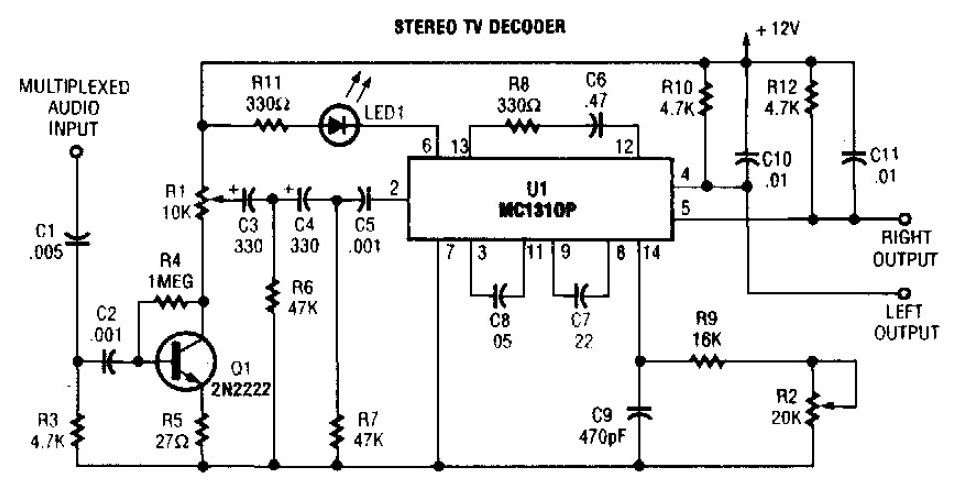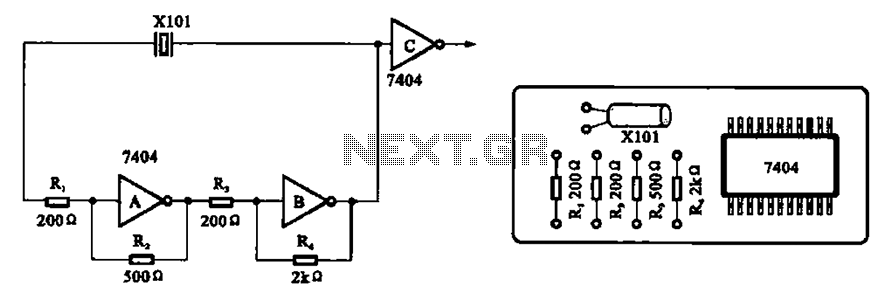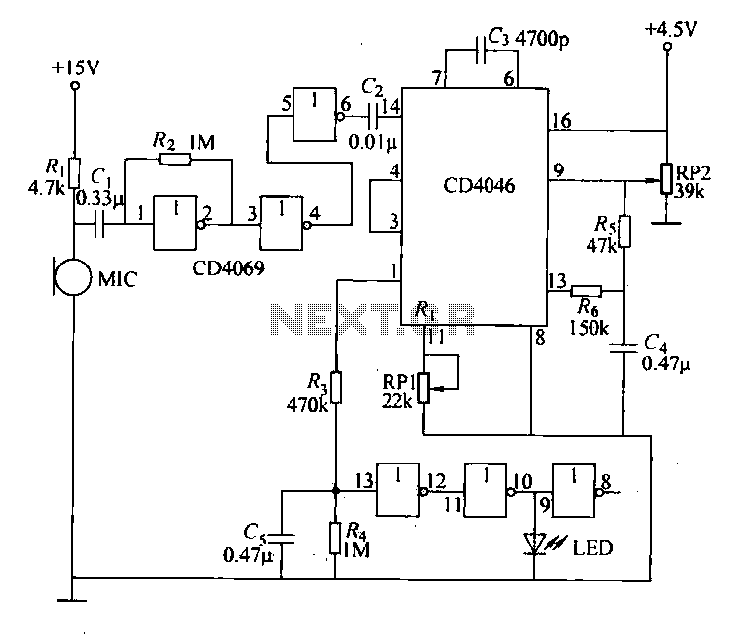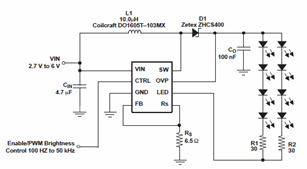
Circuit for controlling 8 appliances using TV Remote
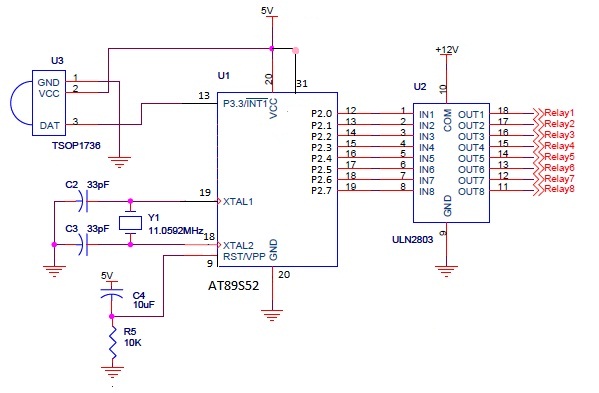
The infrared (IR) circuit is designed to control multiple devices using a TV remote. Unlike standard circuits that can typically switch only one device, this circuit allows for the operation of different devices with the same remote by utilizing distinct switches. In this configuration, eight devices are interfaced, each being controlled via the remote keypad numbered 1 to 8. The AT89S52 microcontroller manages the inputs and outputs of the circuit. The TSOP 1738 infrared receiver captures the infrared signals emitted by the TV remote, while the ULN2803 buffer, which is capable of handling high voltage and high current, is employed to drive the relays.
This infrared control circuit operates by receiving commands from a standard TV remote through the TSOP 1738 receiver. The receiver captures the modulated infrared signals and converts them into a digital format that can be processed by the AT89S52 microcontroller. The microcontroller is programmed to recognize specific key presses from the remote, corresponding to the control of different devices.
Each device is connected to the circuit via relays that are activated by the ULN2803 buffer. This component serves as an intermediary, allowing the microcontroller to control high-power devices without exceeding its output current limitations. The ULN2803 consists of multiple Darlington pairs, providing sufficient current amplification to energize the relays, which in turn switch the connected devices on or off.
The schematic layout includes the TSOP 1738 positioned to receive infrared signals unobstructed, with its output connected to one of the input pins of the AT89S52. The microcontroller is programmed to decode the received signals and determine which device to activate based on the key pressed on the remote. The outputs from the microcontroller are connected to the ULN2803 inputs, which are then connected to the relay coils. Each relay is wired to a specific device, ensuring that when a corresponding key is pressed, the correct relay is energized, allowing control over the connected devices.
Overall, this circuit design provides a versatile solution for controlling multiple devices with a single remote, leveraging the capabilities of the AT89S52 microcontroller, the TSOP 1738 infrared receiver, and the ULN2803 relay driver.The IR circuit can be used to switch devices using TV Remote. Normal circuits can switch only one device. But using this circuit, different devices can be controlled using same remote with different switches. In this circuit, we interfaced 8 devices. These devices are switched using remote keypad -1 to 8. AT89S52 microcontroller is used to control the inputs and outputs. TSOP 1738 (infrared receiver) is used to receive the infrared signals from TV Remote. ULN2803 (High voltage, high current) buffer is used to drive relays. 🔗 External reference
This infrared control circuit operates by receiving commands from a standard TV remote through the TSOP 1738 receiver. The receiver captures the modulated infrared signals and converts them into a digital format that can be processed by the AT89S52 microcontroller. The microcontroller is programmed to recognize specific key presses from the remote, corresponding to the control of different devices.
Each device is connected to the circuit via relays that are activated by the ULN2803 buffer. This component serves as an intermediary, allowing the microcontroller to control high-power devices without exceeding its output current limitations. The ULN2803 consists of multiple Darlington pairs, providing sufficient current amplification to energize the relays, which in turn switch the connected devices on or off.
The schematic layout includes the TSOP 1738 positioned to receive infrared signals unobstructed, with its output connected to one of the input pins of the AT89S52. The microcontroller is programmed to decode the received signals and determine which device to activate based on the key pressed on the remote. The outputs from the microcontroller are connected to the ULN2803 inputs, which are then connected to the relay coils. Each relay is wired to a specific device, ensuring that when a corresponding key is pressed, the correct relay is energized, allowing control over the connected devices.
Overall, this circuit design provides a versatile solution for controlling multiple devices with a single remote, leveraging the capabilities of the AT89S52 microcontroller, the TSOP 1738 infrared receiver, and the ULN2803 relay driver.The IR circuit can be used to switch devices using TV Remote. Normal circuits can switch only one device. But using this circuit, different devices can be controlled using same remote with different switches. In this circuit, we interfaced 8 devices. These devices are switched using remote keypad -1 to 8. AT89S52 microcontroller is used to control the inputs and outputs. TSOP 1738 (infrared receiver) is used to receive the infrared signals from TV Remote. ULN2803 (High voltage, high current) buffer is used to drive relays. 🔗 External reference


